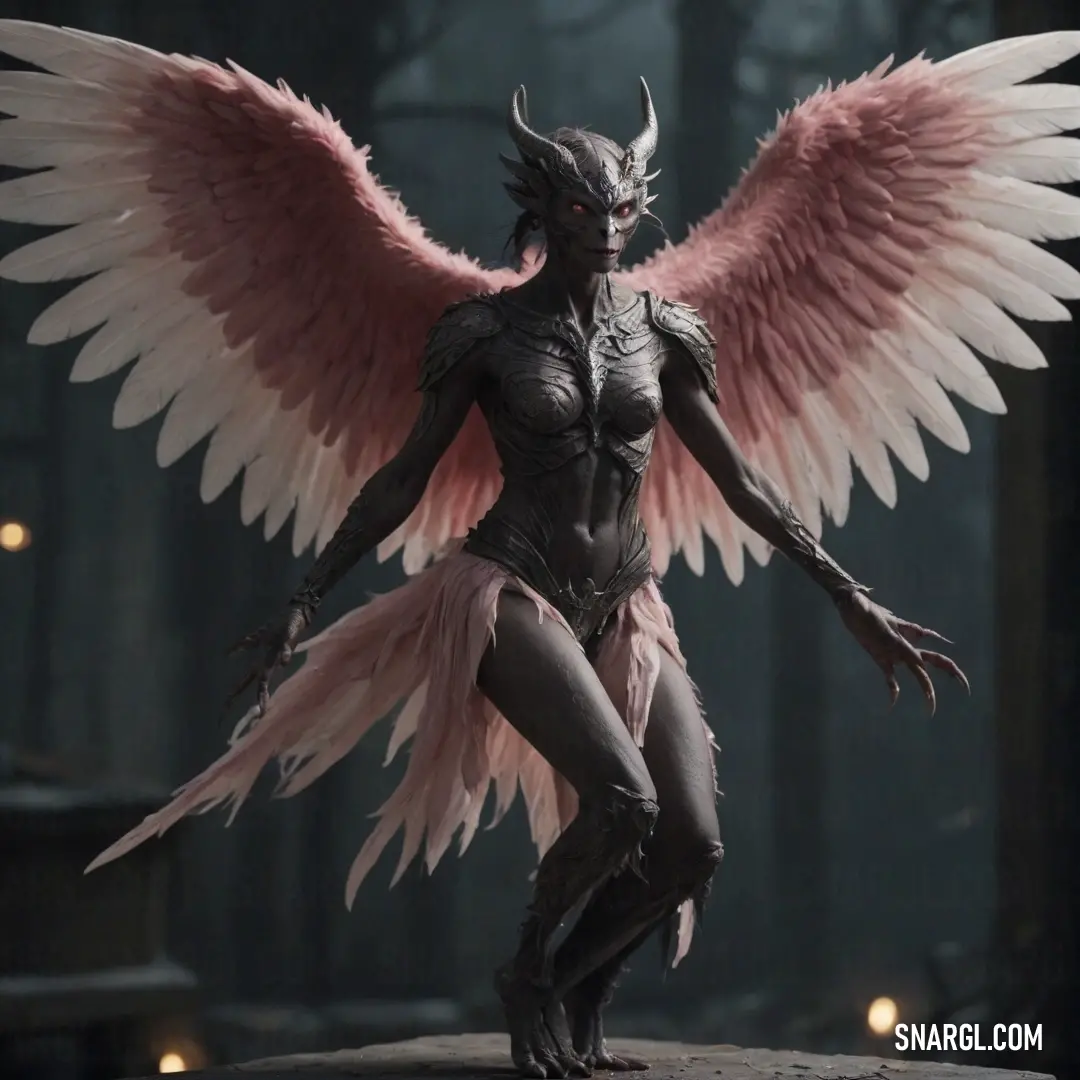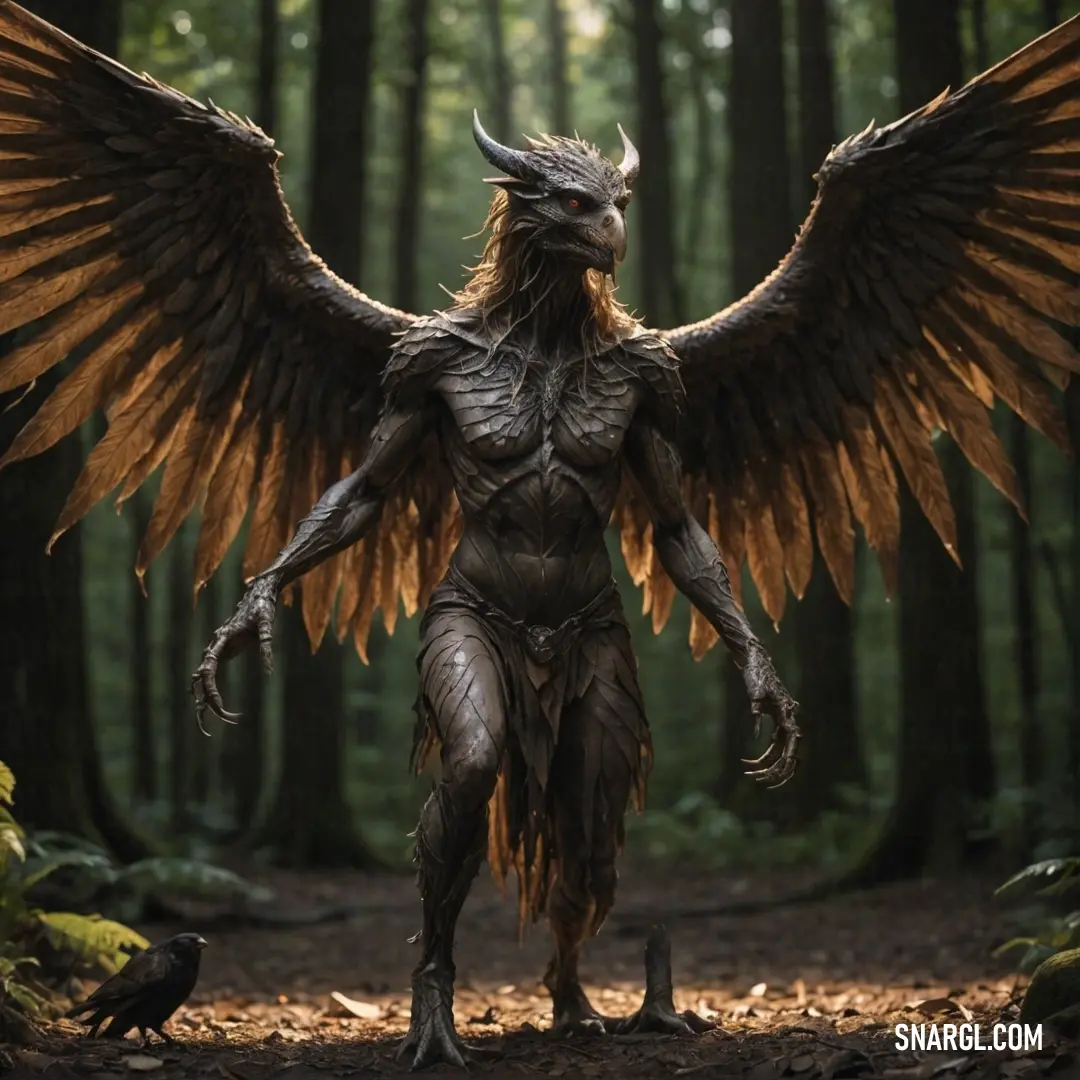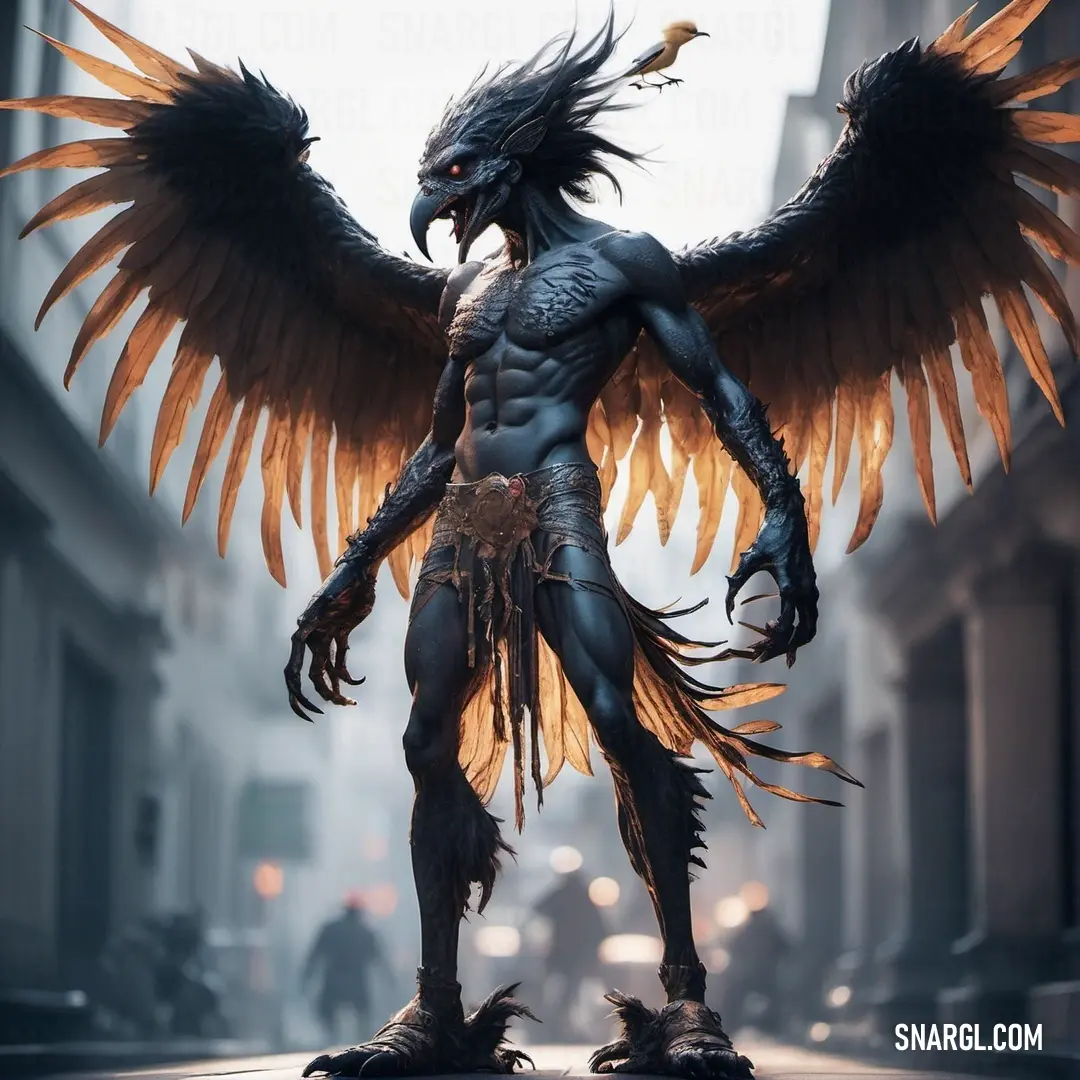
Harpy
Who is a Harpy?
A harpy is a mythical creature that has the body of a bird and the head of a woman.
Harpies are often associated with wind, storms, and death.
They are known for snatching food and people with their sharp claws and carrying them away.
Harpies appear in many ancient stories and legends, such as the Odyssey, they torment the blind prophet Phineus by stealing his food.
Harpies are also sometimes depicted as beautiful winged maidens, but more often as ugly and vicious monsters.
Harpies are not only found in Greek and Roman mythology, but also in other cultures, such as the Sirens of the Middle East, the Tengu of Japan, and the Alkonost of Russia.
Harpies are fascinating creatures that reflect the fears and fantasies of human imagination.
Example of the color palette for the image of Harpy

See these colors in NCS, PANTONE, RAL palettes...
What does a Harpy look like?
Harpies can have different features, such as the number and location of their wings, the shape and color of their feathers, and the degree of their beauty or ugliness.
However, some common characteristics of harpies are:
They have a human face and torso, usually with feminine traits.
Harpies have large feathered wings that allow them to fly. Some of them have wings on their backs, while others have wings instead of arms.
They have bird-like legs that end in sharp claws. Some harpies also have tails or crests.
They can snatch food or people with their talons and carry them away.
Example of the color palette for the image of Harpy

See these colors in NCS, PANTONE, RAL palettes...
Who is harpy in mythology?
A harpy is a mythical creature that has the body of a bird and the face of a woman.
Harpies are usually associated with wind and storms, and they can fly very fast.
Harpies appear in several Greek and Roman myths, such as the story of Jason and the Argonauts, who were attacked by harpies when they visited King Phineus.
Harpies are sometimes depicted as beautiful winged maidens, but more often as ugly and foul-smelling monsters.
What are harpies known for?
They are known for being swift and fierce, often acting as agents of divine punishment or retribution.
They are also associated with the wind, the sea, and the underworld.
Some of the most famous harpies in Greek mythology are:
Podarge (Swiftfoot), who was the mother of Achilles' horses, Xanthus and Balius.
Aello (Stormswift) and Okypete (Swiftwing), who were sent by Zeus to torment King Phineus of Thrace by snatching his food and leaving a foul smell.
They were later driven away by the winged sons of Boreas, Calais and Zetes, who were part of the Argonauts.Celaeno (Dark), who was the leader of the harpies and prophesied that the Trojans would suffer famine before reaching their new home in Italy.
Harpies have been depicted in various ways throughout history and art.
They have also inspired many works of fantasy and fiction, where they often appear as enemies or allies of the heroes.
Harpies fly on feathered wings
Across the sky they soar and sing
They snatch and steal what they desire
They bring the storm and spark the fire
Harpies serve the gods above
They punish those who lack their love
They rend and tear with talons sharp
They leave behind a bleeding mark
Harpies dwell in realms unseen
They haunt the dreams of those who sin
They lure and tempt with voices sweet
They drag them down to their defeat
What powers do harpies have?
They have different powers depending on their origin and appearance.
Some of the common powers of harpies are:
Flight: Harpies can fly with their wings, which can be either feathered or bat-like.
They can soar high in the sky and swoop down on their prey or enemies.Wind Manipulation: Harpies can control and manipulate the air, creating sudden gusts of wind that can snatch away people and things from the earth.
They can also use the wind to enhance their speed and agility in flight.Sonic Scream: Harpies can emit a loud and piercing scream that can stun, deafen, or harm their opponents.
Their scream can also shatter glass and metal objects.Fire Immunity: Some harpies are immune to fire and lava, as they are related to the cyclops, who are the forgers of the gods' weapons.
They can withstand extreme heat and flames without being harmed.Pestilence Manipulation: Some harpies are associated with diseases and foulness, as they are agents of punishment who torture the wicked on their way to Tartarus.
They can generate and spread plagues, infestations, and rot with their touch or droppings.
They can be seen as personifications of the destructive nature of wind, or as the hounds of Zeus who enforce his will.




 Dark jungle green
Dark jungle green Dim gray
Dim gray Medium carmine
Medium carmine Gray-Tea Green
Gray-Tea Green Snow
Snow



 Onyx
Onyx Battleship Grey
Battleship Grey Wenge
Wenge Medium jungle green
Medium jungle green Golden brown
Golden brown







